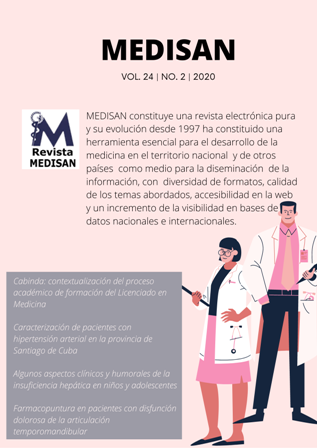Tetra-amelia syndrome: a case report
Keywords:
tetra-amelia syndrome, still born, genetic disorders, malformations.Abstract
A still born male baby with tetra-amelia syndrome is reported, with craniofacial abnormalities and pulmonary agenesis. It presented complete absence of all four limbs in association with cleft lip and palate on the right side. The mother medical history revealed no remarkable details. The fetus died shortly after its birth. The embryonic correlation of the case is discussed. Proper health education, antenatal screening and genetic counseling can reduce the risk of such congenital anomalies.
Downloads
References
2. Gupta S, Soni RK, Agrawal V, Agrawal P, Garg P. As rare as Hen's teeth: Tetra-amelia syndrome. 2017 [cited 29/10/2019];6(2):103-5. Available from: http://www.jcnonweb.com/temp/JClinNeonatol62103-6099527_165635.pdf
3. Boyadjiev Boyd SA. Congenital limb abnormalities. Merck Manual. Kenilworth: Merck; 2018.
4. Jaruratanasirikul S, Tangtrakulwanich B, Rachatawiriyakul P, Sriplung H, Limpitikul W, Dissaneevate P, et al. Prevalence of congenital limb defects: Data from birth defects registries in three provinces in Southern Thailand. Congenital Anomalies. 2016 [cited 30/10/2019];56:203-8. Available from: https://onlinelibrary.wiley.com/doi/epdf/10.1111/cga.12154
5. Gallant GC, Bora FW. Congenital deformities of the upper extremity. J Am Acad Ortho Surg. 1996; 4:162-71.
6. Czeizen AE, Kodaj I, Lenz W. Smoking during pregnancy on congenital limb deficiency. BMJ. 1994;308(6942):1473-6.
7. Niemann S, Zhao C, Pascu F, Stahl U, Aulepp U, Niswander L, et al. Homozygous WNT3 mutation causes tetra-amelia in a large consanguineous family. Am J Hum Genet. 2004;74:558–63.
8. Kanthimathi B, Padamavathy, Lakshmana Rao, Adaikappan, Ethirajan N. Unilateral Phocomelia – A case report. J Anat Soc India. 2008 [cited 30/10/2019];57(2):158-9. Available from: http://medind.nic.in/jae/t08/i2/jaet08i2p158.pdf
9. Datta D, Selvarajah K, Davey N. Functional outcome of patients with proximal upper limb deficiencies – acquired and congenital. Clin Rehabil. 2004;18(2):172-7.
Published
How to Cite
Issue
Section
License
All the articles can be downloaded or read for free. The journal does not charge any amount of money to the authors for the reception, edition or the publication of the articles, making the whole process completely free. Medisan has no embargo period and it is published under the license of Creative Commons, International Non Commercial Recognition 4.0, which authorizes the copy, reproduction and the total or partial distribution of the articles in any format or platform, with the conditions of citing the source of information and not to be used for profitable purposes.





